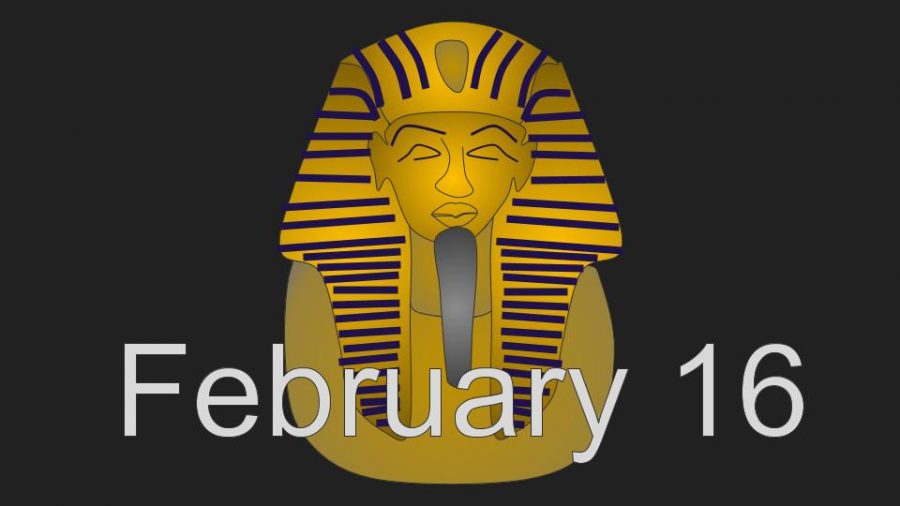This Day in History – February 16th
February 16, 2018
On this day in 1923, an archaeologist opened the tomb of King Tut in Thebes, Egypt. The tomb was opened by English archaeologist Howard Carter.
Since the ancient Egyptians saw their pharaohs as gods, they preserved the pharaohs’ bodies after they died. They put the pharaohs in tombs with many expensive items to be with the ruler in their afterlife. Many archaeologists from around the world raced to the pyramids, uncovered the tombs, and took their riches.
When Howard Carter arrived in Egypt in 1891, he became convinced there was one more undiscovered tomb, the tomb of the infamous Tutankhamen, or King Tut, who lived in 1400 B.C. and died when he was still a teenager. Carter searched for five years without any discoveries. In early 1922, Britain’s Lord Carnarvon, who had supported Carter, wanted to call off the search, but Carter convinced him to hold on 1 more year.
In November of 1922, Carter’s team found hidden steps in a pile of debris close to another tomb. The steps were cleared and a sealed chamber was revealed, bearing the name of Tutankhamen. When Carter and Lord Carnarvon entered the tomb on November 26th, they were glad to find it untouched with its treasures in their place after more than 3,000 years. The men began exploring the 4 rooms of the tomb, and on February 16th, 1923, Carter opened the door to the last chamber.
Inside the last room, there were three coffins, two of them filled with gold, and the last one had the body of King Tut. The preserved mummy was the most valuable, as it was the first one to be discovered in perfect condition. Its treasures were carefully cataloged, removed, and included in a famous traveling exhibition called the “Treasures of Tutankhamen.” The exhibition’s permanent home is the Egyptian Museum in Cairo.





